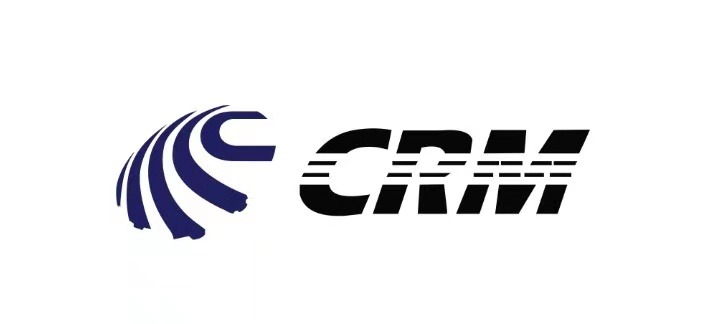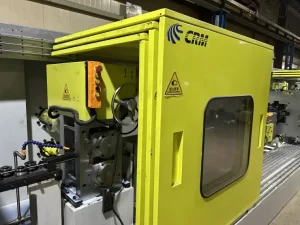A wire drawing machine plays a vital role in modern manufacturing. It reduces the diameter of wires and increases their length, enabling precise applications across industries. For instance, the automotive sector relies heavily on these machines to produce wires for electric vehicles. Similarly, the construction and electronics industries depend on them to meet growing demands for durable and efficient wiring solutions.
Categorization of Wire Drawing Machines
Wire drawing machines are classified into several categories to suit different manufacturing needs. These categories help you understand how the machines operate, the materials they process, and their level of automation.
Based on Operation
Wire drawing machines can be categorized by their mode of operation. This classification focuses on how the machine performs the wire reduction process. You will typically encounter two main types:
- Single-pass Machines: These machines reduce the wire diameter in a single step. They are ideal for applications requiring minimal reduction or when working with softer materials.
- Multi-pass Machines: These machines process the wire through multiple dies, gradually reducing its diameter. They are suitable for harder materials or when a significant reduction in diameter is needed.
Tip: If you need precise control over wire dimensions, multi-pass machines are often the better choice.
Based on Material Processed
The type of material being processed also determines the categorization of wire drawing machines. Different materials require specific designs and features to ensure efficiency and quality. Common classifications include:
- Ferrous Wire Drawing Machines: These machines handle materials like steel and iron. They are built to withstand the high tensile strength of ferrous metals.
- Non-ferrous Wire Drawing Machines: These machines are designed for softer metals such as copper, aluminum, and brass. They often include features to prevent material deformation.
Each type of machine is tailored to the unique properties of the material, ensuring optimal performance and durability.
Based on Automation Level
Automation plays a crucial role in modern manufacturing. Wire drawing machines are categorized based on their level of automation, which impacts productivity and ease of use:
- Manual Machines: These require significant operator involvement. They are cost-effective but may not be suitable for high-volume production.
- Semi-automatic Machines: These machines combine manual and automated features. They offer a balance between cost and efficiency.
- Fully Automatic Machines: These machines operate with minimal human intervention. They are ideal for large-scale production and ensure consistent quality.
Note: Fully automatic machines often come with advanced features like real-time monitoring and error detection, making them a smart investment for high-demand industries.
Types of Wire Drawing Machines
Single-block Wire Drawing Machines
Single-block wire drawing machines are designed for straightforward operations. These machines feature a single drawing drum or block, which pulls the wire through a die to reduce its diameter. They are ideal for small-scale production or applications requiring minimal wire reduction. You can use them for softer materials like copper or aluminum, where a single pass is sufficient to achieve the desired dimensions.
Tip: Single-block machines are cost-effective and easy to operate, making them a great choice for beginners or small workshops.
Multi-block Wire Drawing Machines
Multi-block wire drawing machines are more advanced and versatile. They consist of multiple drawing blocks arranged in sequence, allowing the wire to pass through several dies. This setup gradually reduces the wire’s diameter while maintaining its structural integrity. These machines are perfect for processing harder materials like steel or for applications requiring significant diameter reduction.
- Advantages:
- Suitable for high-strength materials.
- Capable of achieving precise wire dimensions.
- Efficient for large-scale production.
If you need to produce wires for demanding industries like automotive or construction, multi-block machines offer the reliability and precision you require.
Continuous Wire Drawing Machines
Continuous wire drawing machines are designed for uninterrupted production. They use advanced technology to draw wire continuously without stopping for adjustments or material changes. These machines are highly automated and equipped with real-time monitoring systems.
- Key Features:
- Continuous real-time monitoring ensures constant production optimization.
- Operators receive immediate updates on machinery conditions.
- Timely detection of issues prevents costly disruptions.
- Data analytics provide actionable insights to improve productivity.
Note: Continuous wire drawing machines are ideal for manufacturers aiming to maximize efficiency and maintain consistent product quality.
Wet Wire Drawing Machines
Wet wire drawing machines use a lubrication system to reduce friction during the drawing process. The wire and die are submerged in a lubricant, which minimizes wear and tear and ensures a smooth finish. These machines are commonly used for producing high-quality wires for specialized applications.
- Process Insights:
- Experiments show that lower drawing speeds with increased die pressure reduce friction coefficients.
- Adjusting die angles and lubrication regimes can optimize wire quality.
- Studies highlight the importance of die geometry in achieving superior results.
If your production requires wires with a polished surface and minimal defects, wet wire drawing machines are an excellent choice.
Dry Wire Drawing Machines
Dry wire drawing machines operate without submerging the wire in a lubricant. Instead, they use a dry powder or soap to reduce friction. These machines are suitable for applications where a dry finish is preferred or where wet lubrication is impractical.
- Benefits:
- Lower maintenance requirements compared to wet machines.
- Ideal for producing wires with specific surface properties.
- Suitable for high-speed operations.
Dry wire drawing machines are commonly used in industries where cleanliness and specific surface finishes are critical, such as in the production of electrical wires.
Applications and Industries
Common Applications of Wire Drawing Machines
Wire drawing machines play a critical role in producing wires for various applications. These machines ensure precise dimensions and high-quality finishes, making them indispensable in modern manufacturing. Here are some common uses:
| Application Area | Industry Impact |
|---|---|
| Cables | Essential for electrical infrastructure and telecommunications. |
| Electrical Wiring | Critical for residential and commercial electrical systems. |
| Paper Clips | Commonly used in office supplies and stationery. |
| Springs | Vital for automotive and machinery applications. |
| Stringed Musical Instruments | Important for the production of musical equipment. |
| Tension-loaded Structural Components | Used in construction and engineering applications. |
In addition, wire drawing machines are increasingly used in the medical field. For example, they produce fine wires for surgical instruments, stents, and dental braces. These applications demand precision and reliability, which these machines deliver consistently.
Did you know? High-speed wet wire drawing is gaining popularity for producing fine high-carbon steel wires, especially in industries requiring superior strength and durability.
Industries Benefiting from Wire Drawing Machines
Several industries rely on wire drawing machines to meet their production needs. The automotive sector, for instance, uses these machines to manufacture wiring harnesses for electric vehicles. The electronics industry depends on them for high-precision wires used in smart devices and IoT technologies.
| Sector | Benefits |
|---|---|
| Automotive | Increased demand for plastic wires due to the shift towards electric vehicles and the need for wiring harnesses. |
| Electronics | High-precision plastic wires are essential for manufacturing electronic components, driven by the growth of smart devices and IoT technologies. |
| Construction | Demand driven by the need for electrical wiring in buildings, with plastic wires preferred for their flexibility and durability. |
Industrialization has further boosted the demand for wire drawing machines. As manufacturing scales up globally, these machines have become essential for producing wires that meet the stringent requirements of modern industries.
Wire drawing machines play a pivotal role in modern manufacturing. They enable the production of specialized materials like alloys, superconductors, and superfine wires with remarkable precision. Innovations in die geometries and automation have enhanced efficiency and accuracy. By understanding their applications, you can optimize processes and meet the demands of industries like automotive and electronics.




